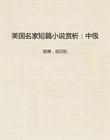The War Measures of the Federal GovernmentRaising the Armies.-The crisis at Fort Sumter,on April 12-14,1861,forced the President and Congress to turn from negotiations to problems of warfare.Little did they realize the magnitude of the task before them.Lincoln's first call for volunteers,issued on April 15,1861,limited the number to 75,000,put their term of service at three months,and prescribed their duty as the enforcement of the law against combinations too powerful to be overcome by ordinary judicial process.Disillusionment swiftly followed.The terrible defeat of the Federals at Bull Run on July 21revealed the serious character of the task before them;and by a series of measures Congress put the entire man power of the country at the President's command.Under these acts,he issued new calls for volunteers.Early in August,1862,he ordered a draft of militiamen numbering 300,000for nine months'service.The results were disappointing-ominous-for only about 87,000soldiers were added to the army.Something more drastic was clearly necessary.
In March,1863,Lincoln signed the inevitable draft law;it enrolled in the national forces liable to military duty all able-bodied male citizens and persons of foreign birth who had declared their intention to become citizens,betweenThe Draft Riots in New York Citythe ages of twenty and forty-five years-with exemptions on grounds of physical weakness and dependency.From the men enrolled were drawn by lot those destined to active service.Unhappily the measure struck a mortal blow at the principle of universal liability by excusing any person who found a substitute for himself or paid into the war office a sum,not exceeding three hundred dollars,to be fixed by general order.This provision,so crass and so obviously favoring the well-to-do,sowed seeds of bitterness which sprang up a hundredfold in the North.
The beginning of the drawings under the draft act in New York City,on Monday,July 13,1863,was the signal for four days of rioting.In the course of this uprising,draft headquarters were destroyed;the office of the Tribune was gutted;negroes were seized,hanged,and shot;the homes of obnoxious Unionists were burned down;the residence of the mayor of the city was attacked;and regular battles were fought in the streets between the rioters and the police.Business stopped and a large part of the city passed absolutely into the control of the mob.Not until late the following Wednesday did enough troops arrive to restore order and enable the residents of the city to resume their daily activities.At least a thousand people had been killed or wounded and more than a million dollars'worth of damage done to property.The draft temporarily interrupted by this outbreak was then resumed and carried out without further trouble.
The results of the draft were in the end distinctly disappointing to the government.The exemptions were numerous and the number who preferred and were able to pay $300rather than serve exceeded all expectations.Volunteering,it is true,was stimulated,but even that resource could hardly keep the thinning ranks of the army filled.With reluctance Congress struck out the $300exemption clause,but still favored the well-to-do by allowing them to hire substitutes if they could find them.With all this power in its hands the administration was able by January,1865,to construct a union army that outnumbered the Confederates two to one.
War Finance.-In the financial sphere the North faced immense difficulties.The surplus in the treasury had been dissipated by 1861and the tariff of 1857had failed to produce an income sufficient to meet the ordinary expenses of the government.Confronted by military and naval expenditures of appalling mag-nitude,rising from $35,000,000in the first year of the war to $1,153,000,000in the last year,the administration had to tap every available source of income.The duties on imports were increased,not once but many times,producing huge revenues and also meeting the most extravagant demands of the manufac-turers for protection.Direct taxes were imposed on the states according to theirrespective populations,but the returns were meager-all out of proportion to the irritation involved.Stamp taxes and taxes on luxuries,occupations,and the earnings of corporations were laid with a weight that,in ordinary times,would have drawn forth opposition of ominous strength.The whole gamut of taxation was run.Even a tax on incomes and gains by the year,the first in the history of the federal government,was included in the long list.
Revenues were supplemented by bond issues,mounting in size and interest rate,until in October,at the end of the war,the debt stood at $2,208,000,000.The total cost of the war was many times the money value of all the slaves in the Southern states.To the debt must be added nearly half a billion dollars in "greenbacks"-paper money issued by Congress in desperation as bond sales and revenues from taxes failed to meet the rising expenditures.This currency issued at par on questionable warrant from the Constitution,like all such paper,quickly began to decline until in the worst fortunes of 1864one dollar in gold was worth nearly three in greenbacks.














